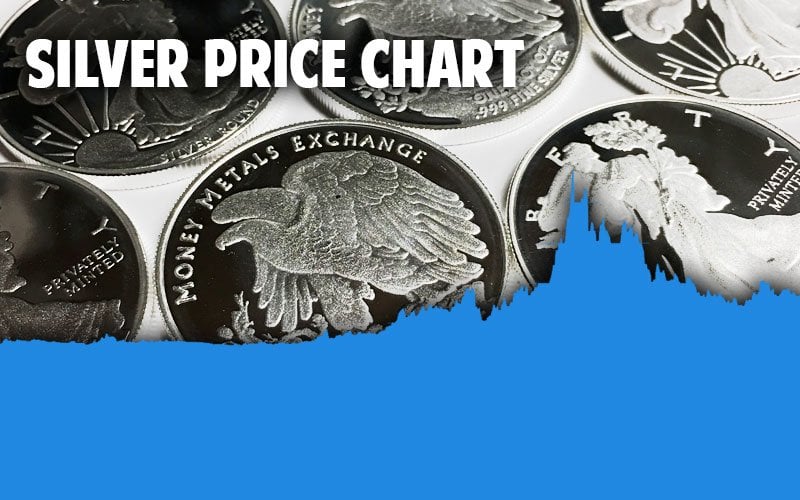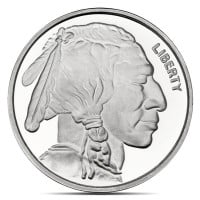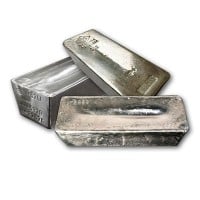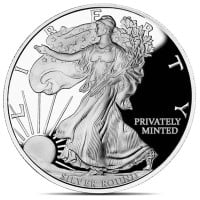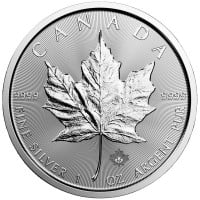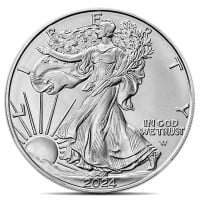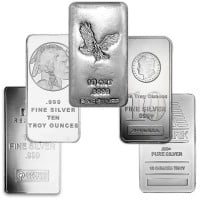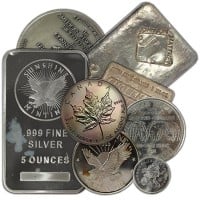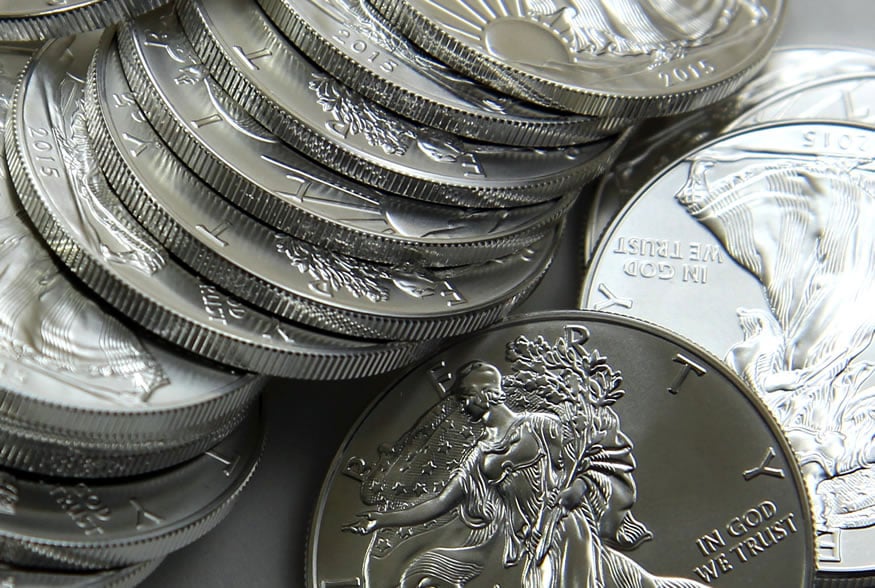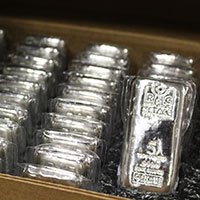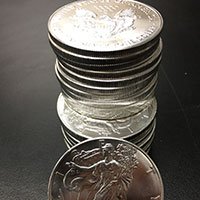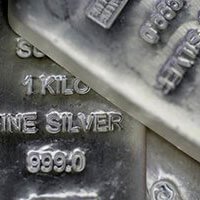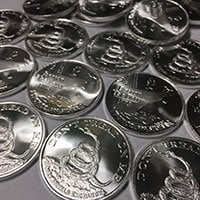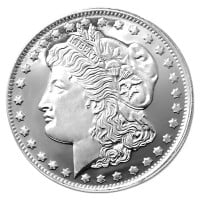-
Silver price charts
Silver Prices Today, Live Spot Prices & Historical Charts
Money Metals Exchange Live Silver Spot Prices
| Silver Spot Price | Spot Change | ||
|---|---|---|---|
| Silver Price per Ounce | $27.38 |
0.04
|
0.15 % |
| Silver Price per Gram | $0.88 |
0.00
|
0.15 % |
| Silver price per kilo | $880.29 |
1.29
|
0.15 % |
The current silver price fluctuates based on supply and demand. It is important to stay up-to-date with market trends and news to make informed decisions about buying or selling silver. Online resources such as those found on Money Metals Exchange and financial news websites can provide real-time updates and information on silver prices.
Money Metals Exchange's interactive silver price chart allows you to check the price data of silver today or historical silver prices dating back 20 years. Hover over the chart to see the spot price for that particular day.

Contents
Discover the Basic Truth about Silver Prices
It is easy to understand the universal appeal of silver. Beginners and expert investors worldwide choose silver more than any other precious metal. Silver is a precious metal, meaning it is rare and valuable. Precious metals are silver, gold, platinum, palladium, and rhodium. The price of silver per ounce is lower than Gold, making it accessible for beginners and a viable option for those with a limited budget.
Experienced investors recognize silver has value as both an investment and a monetary metal. Silver is often used as a form of investment, as it is seen as a safe-haven asset. Silver also has practical applications that help keep it in demand, especially in the technology industry, such as for solar panels and computer devices. Silver is a soft metal and is often mixed with other metals to create alloys, which makes it useful for coinage as well as many other applications.
Silver is used in a variety of industries, including electronics, jewelry, photography, and medicine. However, the price of silver is volatile when compared to the U.S. dollar, and can fluctuate significantly in a short period of time. Nevertheless, silver has maintained its value for thousands of years and has demonstrated time and time again to be a good hedge against inflation. Diverse holdings are a key to financial success.
Discover the fundamental truth about the current silver price and what makes silver such an alluring investment opportunity that can sometimes exceed expectations.
Start Investing in Silver Bullion:
Silver as an investment
Silver, much like gold, has historically proven to be a reliable investment option, particularly in the context of ongoing dollar devaluation. The value of silver tends to rise as a hedge against inflation and economic uncertainties. This relationship between silver prices and the dollar's purchasing power erosion makes silver an attractive choice for investors seeking a store of value.
Amid a financial landscape characterized by central banks consistently injecting new money into the system, physical silver stands as a tangible asset with a track record of maintaining and increasing its nominal dollar price. Unlike other investment options, such as stocks or bonds, silver carries no risk of bankruptcy or default, rendering it a secure choice for wealth preservation.
Silver's utility extends beyond being a mere investment; it is a versatile industrial commodity with a wide range of applications. This intrinsic value ensures that silver is unlikely to lose all its worth, even in times of economic turbulence. Moreover, silver coins, with their historical significance and widespread recognition, are likely to remain liquid and readily accepted in trade, irrespective of fluctuations in their dollar value. As such, silver holds a prominent position in diversifying investment portfolios, particularly in response to evolving economic conditions and various stages of the economic cycle.
In the debate of gold versus silver, the consensus often leans toward holding both precious metals. Owning a balanced combination of gold and silver provides investors with versatility in navigating different economic scenarios. Gold typically holds its value well during periods of deflation or credit crises, while silver tends to perform favorably when inflationary pressures mount. The relative pricing of gold and silver, indicated by the gold-to-silver ratio, can guide investors in determining which metal presents a more attractive investment opportunity. Ultimately, the dual ownership of gold and silver offers a comprehensive approach to wealth preservation and diversification in an ever-changing financial landscape.
Historical Significance of Silver
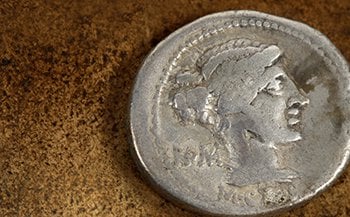
Silver is one of the oldest known metals, having been used for thousands of years in jewelry, coins, and other forms of currency. It is estimated that silver coins could be the oldest mass-produced form of coinage in history. Since the time of the Greeks, people have used silver coins as money instead of cash. Ancient Persian silver coins date back to between 612-330 BC.
Other countries throughout the world, including Europe, China, Australia, South Africa, and more, have also had their own silver coins. Sometimes these silver coins were only for trade dollars, such as times between the U.S. and Chinese, which were silver coins only intended for business and government purposes.
Collectible coins, even cash, range in value based on demand, condition, and rarity. Silver coins have been used as currency around the world throughout history. Silver bullion coins, bars, rounds, silver paper, silver ETFs, silver IRA, and silver futures, are great investments regardless of inflation.
Silver Price and Currency Exchange Rates
As a matter of fact, the value of money fluctuates based on each government and their interrelated exchanges. Silver is an international way to store value, also known as a store of value, regardless of surface-level political events. Any investment conversation will usually focus on the range of unpredictability of currencies and stocks. For this reason, people continue to use and invest in precious metals such as silver and gold products, as well as platinum and palladium.
Theoretically, if a person acquired ten ounces of silver in 2000 at $8 per ounce with a total of $80 spent, today at a spot price of around $23 per ounce, that ten ounces would be around $230, which is a $150 profit.
Silver Price and the Stock Market
The stock market has seen a sustained upward trend, largely driven by Federal Reserve policies. However, concerns are rising about the potential for a significant market pullback if the Fed decides to tighten its monetary policies due to inflation and rising interest rates. This has prompted investors to explore alternative assets like silver, which tends to perform well during market turbulence and periods of inflation, primarily due to negative real interest rates.
Silver, like gold, is often considered a safe-haven asset, particularly during economic uncertainty and market volatility. A key factor in the appeal of precious metals like silver is the presence of negative real interest rates, where inflation exceeds nominal interest rates. This condition currently exists, and even if the Fed raises rates, they are expected to remain below inflation levels. Consequently, investors are increasingly looking to silver as a store of value and a potential hedge against the risks associated with an overheated stock market.
In light of the stock market's prolonged rally and the Federal Reserve's monetary policies, silver's role as a potential hedge and safe-haven asset has garnered attention. It serves as an alternative investment option for those concerned about the vulnerability of the stock market, especially in the face of inflation and potential interest rate hikes.
How Geopolitical Events Affect the Silver price
Geopolitical events can significantly impact the price of silver, as they can introduce uncertainty and drive investors towards safe-haven assets. Recent tensions between major world powers like China and Russia have raised concerns about potential economic consequences, leading investors to seek refuge in precious metals, including silver. When geopolitical conflicts escalate, there is often a flight to safety, and silver, known for its historical role as a store of value, becomes an attractive option.
Additionally, the de-dollarization efforts of countries like China and Russia can influence silver prices. As these nations seek to reduce their reliance on the U.S. dollar in global trade, they may increase their holdings of alternative assets, including silver. This can create additional demand for the precious metal, putting upward pressure on its price.
Furthermore, the threat of economic sanctions and financial warfare, as discussed in the article, can affect the value of silver. When countries face sanctions, they may turn to precious metals like silver as a means of preserving wealth and maintaining financial stability. This increased demand, driven by geopolitical tensions, can have a direct impact on silver prices, making it a valuable asset to watch for investors navigating uncertain global geopolitical landscapes.
Beyond the Silver Standard

Decades ago, the silver standard came to an end in developed countries, which means silver was no longer considered legal tender. A number of countries, including the United States, continue to mint bullion and collectible coins.
An example is the American Silver Eagle, which has the nominal face value of a one-dollar coin. The Canadian Silver Maple Leaf coins are legal tender in Canada, valued at about USD $5 per coin. Privately minted coins are referred to as silver rounds, which are not legal tender, but make for a great purchase for investing in silver troy ounces.
However, hard money enthusiasts may still use them as an investment opportunity. Most private silver mints and companies, like the classic SilverTowne, have commemorative designs and have a weight of 1 troy ounce of silver, while there are some that are sterling silver.
The current demand for silver is for industrial applications and investment purposes, including bullion coins and exchange-traded products. There continues to be a strong market for silver around the world, as evidenced by the averages and NYSE site.
Global Demand
Global demand strongly affects silver prices, and this relationship is particularly evident in key industries. Silver's crucial role in solar energy as a conductor in photovoltaic panels ensures its consistent demand as the world shifts towards renewable energy sources. The more global society embraces solar technology, the higher the demand for silver, ultimately pushing its prices upward.
Silver's significance in the electronics industry further underscores the impact of global demand on its value. Found in various electronic devices, silver's exceptional electrical conductivity remains unmatched. As technology advances and electronic applications continue to proliferate, the demand for silver in these sectors rises, exerting upward pressure on its price.
Investors also contribute to the demand for silver as they turn to it as a safe-haven asset during times of economic uncertainty, inflation, and currency devaluation. When geopolitical tensions escalate or economic conditions become uncertain on a global scale, the demand for silver as a store of value surges, shaping its market value.
Global demand, driven by the renewable energy and electronics sectors, as well as investor preferences for silver as a hedge, significantly influences silver prices. These factors continually evolve, making silver a dynamic asset whose value responds to shifts in the global demand landscape.
Understanding Silver Spot Prices
When investors check the NASDAQ live feed in the morning or go online to visit a website to find out the current value of silver, the spot price is what matters. This refers to the unit price silver can be exchanged and delivered right now.
"Whether an investor is buying, trading, or selling silver, it is important to verify the spot price."
It is the current trading value of silver and other precious metals, as well as certain other commodities. Whether an investor is purchasing, trading, or selling silver, it is important to verify the spot price. COMEX is a reliable source to access indices for the price of silver, as the prices today will not be the same as yesterday, an hour ago, or in the future.
Smart investors check the chart for current rates right before they buy precious metals. They also verify the reliability of the resources they use, rather than relying on a comment published by a writer who might not be aware of the spot price of silver today. The Money Metals website is a great source for general precious metals market news content and specific information on silver. ZeroHedge is also a good site for updates and general silver information.
From am to pm, the latest daily charts are important to make smart purchases from dealers who reply instantly. A skilled investor gets to know the markets, including real-time ratios on prices for oil, gold, and silver, and has a calculator handy at all times. There are also online precious metal calculators to verify an amount quoted to try to avoid a significant loss before signing any contracts or making your final purchase.
How is the Silver Spot Price Determined?
Traders determine silver and gold spot prices on futures exchanges. A Spot contract can change hands in London and Shanghai when U.S. markets are closed. However, the largest and most influential market for metals prices is the U.S. COMEX exchange site, and the CME Group Comex app. The quote for immediate settlement or purchase at any given time is effectively the spot market price.
Spot (paper) prices can sometimes diverge from real-world pricing in the markets for physical precious metals. For example, during periods of extreme stress in markets, it may be impossible to purchase physical metal anywhere near the quoted spot price. Some premiums on retail bullion products and offers may surge as a consequence. When the physical market diverges from the paper market, wholesale over-the-counter unit prices may be more realistic than spot prices.
Why Can't I Buy Silver at the Spot Price?
Retail silver bullion products including silver bullion bars, rounds, and coins carry small premiums over spot prices. The premium includes minting coin costs plus the dealer's profit. The premium also incorporates any wholesale premiums the dealer must pay to acquire the product.
Why Do I Have to Pay a Premium for Silver Coins?
Premiums vary according to market conditions. When demand for purchasing silver is soft, premiums may fall, especially on secondary market products such as pre-1965 U.S. silver coins. Secondary market products - items that are being resold rather than sold for the first time as brand new - can often be purchased at a discount to newly minted products and very close to actual spot prices.
Why are Silver Premiums so High?
Premiums represent a combination of factors. For newly minted silver coins, rounds, and bars, the cost of manufacturing is a major factor. There are some premiums for delivery, depending on the company and the size of the purchase. Mints and refiners set manufacturing charges based on the cost of labor and equipment, not on the spot price for the metal. These types of costs do not follow the silver price downward – or upward for that matter.
Another factor in premiums is demand. And demand for physical silver is setting records – the opposite of what is happening in the markets for paper silver. Dealers are bidding aggressively for physical inventory, putting upward pressure on premiums.
This dynamic is compounded by short supply when it comes to bullion products such as junk silver dating pre-1965 U.S. silver dimes, quarters, and half dollars. Mints and refiners aren't producing anymore.
Both the bid and the ask premiums for the pre-1965 coins are significantly higher than in 2010 – the last time silver traded below $20/oz (USD). The difference is in investor perceptions.
In 2010, silver was nearing recent highs and more people were willing to sell. Currently, silver spot prices are less than half the 2011 highs and virtually everyone who owns pre-1965 coins is holding out for a recovery.
Just make sure your dealer is pricing competitively and pay attention to the account premiums being offered should you wish to sell or bid. Beyond that, higher silver premiums signal the existence of a strong market for physical silver, silver coins, silver rounds, and silver bars, and that's great news for investors!
Silver Price News
Sign Up for Free Price Alerts
In a few short seconds, you can direct us to alert you whenever precious metals prices reach your specified target. It's free!
Simply enter your email address and price target on the form below, and we will email you the moment your price objective is reached.




